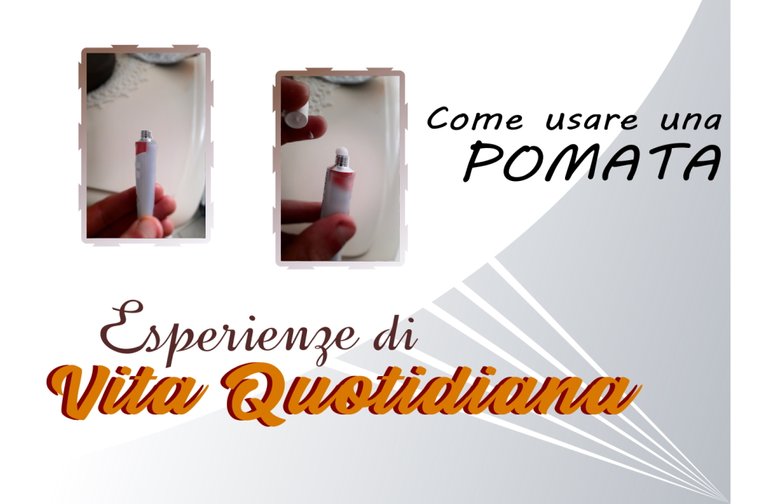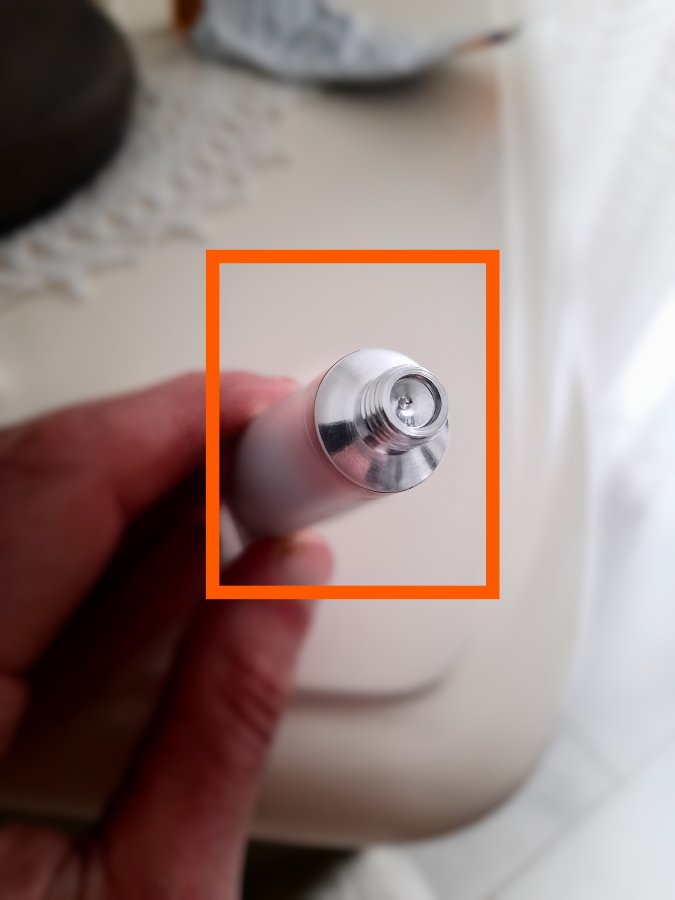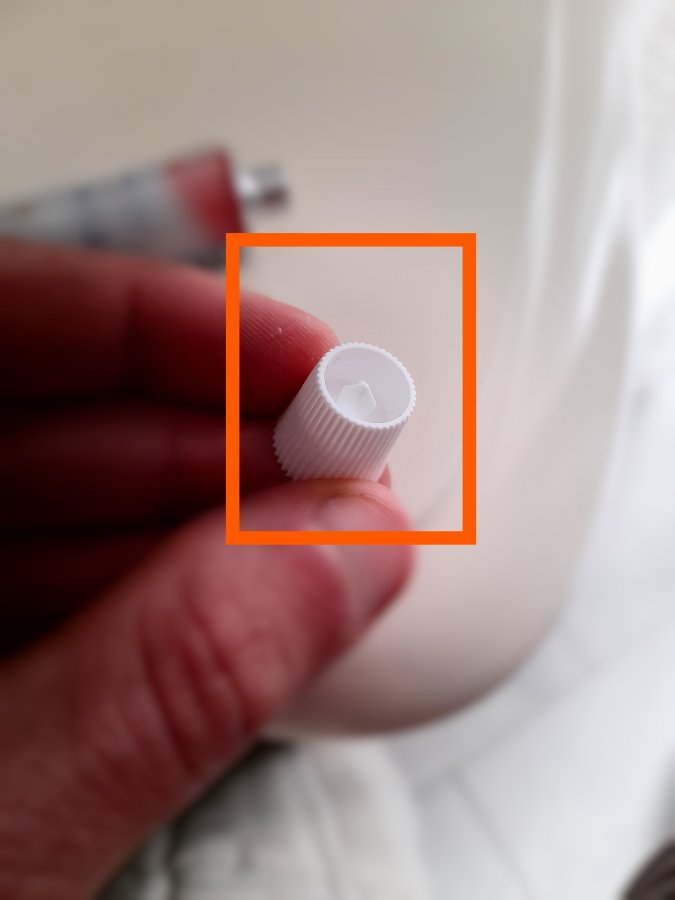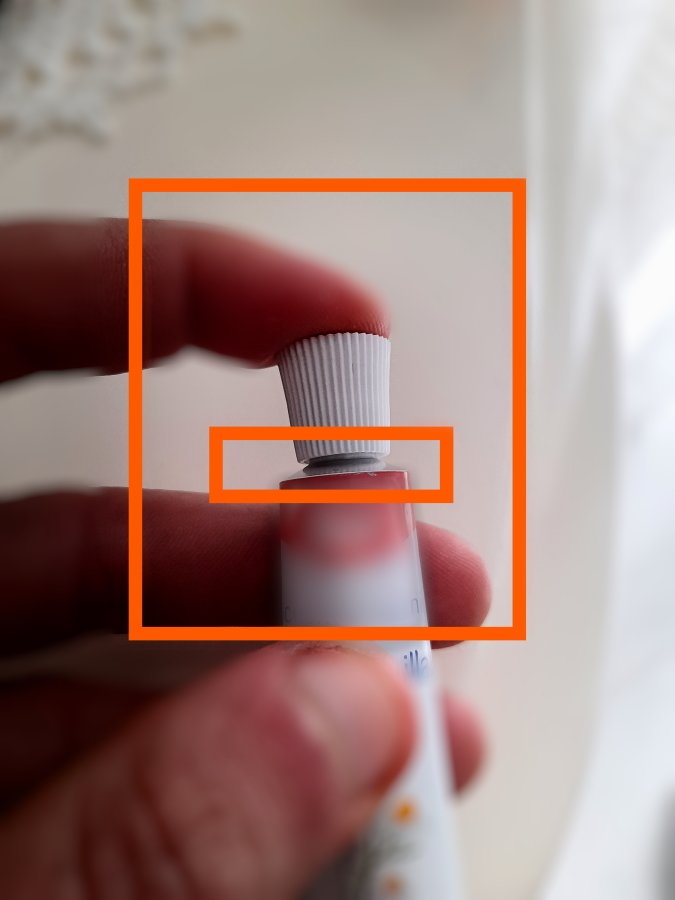Come usare una pomata | Using a cream tube [ITA|ENG]

Ciao!
Oggi torno con la mia rubrica sulle esperienze di vita quotidiana. Immagino tu abbia già intuito dalla copertina di che cosa parlerò: di pomate.
Si ma non di pomate proprio pomate, più che altro degli involucri nei quali vengono inserite pomate o cosmetici similari. Perché? Da dove questa idea? Semplice: nella mia esperienza non c'è stata persona che abbia spiegato come aprirle, quando in realtà è stato inventato un meccanismo di cui molti tubetti (a volte anche a uso alimentare) sono provvisti. Molti di voi avranno imparato come fare osservando qua e là, ma a volte ho notato metodi molto fantasiosi adottati per aprire un varco tra le mura del tubetto, con attrezzi del calibro di spessi aghi o cacciaviti. Perché queste macchinose soluzioni? Come ho già detto, perché – come per me – probabilmente non c'è stata persona che spiegasse una seconda semplice opportunità. E allora vediamo il tanto decantato trucco.
Il trucco c'è, ma dov'è?
Per prima cosa, prendiamo il nostro tubetto, nel mio caso un ristretto tubetto di crema per mani. Ho contraddistinto le parti dell'immagine cui devi fare attenzione con dei rettangoli dal contorno rosso-arancio.

Prima osserviamo l'oggetto senza tappo per capire il problema: moltissimi prodotti in tubetto vengono sigillati con vari metodi per ottenere una migliore conservazione di ciò che contengono prima della loro apertura. Il sigillo di molte creme cosmetiche o di prodotti farmaceutici in tubetto è più resistente di una sottilissima pellicola di carta, e serve fare una pressione con qualcosa di appuntito per riuscire a bucarlo. No so di preciso di che materiale sia, ma di solito sembra una pellicola di alluminio inglobata all'interno dell'estremità esterna del tubetto. In figura ho provato a fotografare questa parte, oltre al sigillo dal colore metallico che si trovava all'interno.

In precedenza ho parlato di aghi spessi o di cacciaviti, due esempi che ho visto utilizzare negli anni da chi non sapeva come fare. Ma ho anche detto che al giorno d'oggi spesso e volentieri troviamo un trucco. Non sempre, ma quasi. E sì, il trucco c'è ed è nascosto dentro il TAPPO! Se guardiamo il tappo avvitato (o lo facciamo una volta svitato) dall'alto, noteremo che, all'interno di uno dei lati, è presente una specie di punta che si innalza da un incavo. Ecco qua di che cosa sto parlando.

Questa forma non è a caso: se, una volta svitato il tappo, lo proviamo ad avvitare rivolgendo questa punta verso l'interno del tubetto, la punta di plastica all'interno del tappo andrà a bucare la pellicola che sigilla il tubetto e che divide la soluzione al suo interno dall'ambiente esterno. Vediamo il tappo montato sopra il tubetto

e poi il tappo spinto o avvitato sul tubetto. A seconda del tipo, il tappo può essere avvitato oppure solamente spinto. Nel caso in esame, io l'ho spinto all'interno facendo pressione con un dito.

A questo punto il tubetto è pronto per l'uso. Molte volte la pomata o la soluzione dentro il tubetto fuoriuscirà in maniera più violenta. Abbi l'accortezza di pensare a questa evenienza. Nell'ultima foto puoi vedere la pomata che esce dopo aver svitato e rimosso nuovamente il tappo.

Ora potrai usare la pomata come meglio credi, seguendo sempre le istruzioni per l'uso. Nel caso il tubetto fosse di maionese, potrai invece gustartela.
Ho provato a cercare qualche notizia su questo meccanismo ma non ho trovato molto. Non saprei nemmeno se sia stato brevettato e, nel caso, da chi. Spero comunque di averti lasciato un'informazione utile in più e magari averti aperto gli occhi su un trucco poco pubblicizzato. E qui termino, salutandoti e augurandoti una buona giornata. Continuerò saltuariamente a pubblicare articoli sotto i tag #daily #life #experiences. Se fossi interessato/a, lanciagli un'occhiata ogni tanto.
A presto!
ENGLISH VERSION

Hello!
Today, I'm back with my initiative on daily life experiences. I guess you've already guessed from the cover what I'm going to talk about: creams.
Yes, but not really creams, mostly wrappings in which creams or similar cosmetics are inserted. Because? Where does this idea come from? Simple: in my experience, there has been no one who has explained how to open them, when in reality a mechanism has been invented which many tubes (sometimes also for food use) are equipped with. Many of you will have learned how to do this by looking here and there, but at times I have noticed very inventive methods used to open a gap between the walls of the tube, with tools such as thick needles or screwdrivers. Why these intricate solutions? As I said before, because – as for me – probably there was no person to explain it to these people. And then we see the much-vaunted trick.
The trick is there, but where is it?
First, take our tube, in my case a narrow hands cream tube. I indicated the parts of the image where you have to pay your attention thanks to red-orange outline rectangles.

First, I'll show you the tube without a cap to make you understand the problem: many products in tubes are sealed with various methods to obtain better conservation of the product before they are opened. The seal of many cosmetic creams or pharmaceutical products in tubes is more resistant than a very thin film of paper, and you need to apply pressure with something sharp to be able to pierce it. I don't know exactly what material it is, but it usually looks like aluminium foil embedded inside the outer end of the tube. In the figure, I tried to photograph this part and the metallic-colored closure that I found inside.

Before, I talked about thick needles or screwdrivers, two examples I've seen used over the years by those who didn't know how to break the seal. But I also said that nowadays we often find a trick. Not always, but almost. And yes, the trick is there, and it's hidden inside the CAP! If we look at the screwed (or once unscrewed) cap from above, we will notice that inside one of the sides there is a kind of point that rises from a hollow. Here's what I'm talking about.

This shape is no coincidence: once the cap has been unscrewed, if we try to screw it by turning this tip towards the inside of the tube, the plastic tip inside the cap will pierce the film that seals the tube and which divides the solution within it from the external environment. We see the cap mounted on top of the tube

and then the cap, pushed or screwed onto the tube. Depending on the type, the cap can be screwed on or just pushed. In the herein case, I pushed it in by applying pressure with my finger.

Now, the tube is ready for use. Many times, the cream or solution inside the tube will come out more violently. Have the foresight to think about this event. In the last photo, you can see the cream coming out after unscrewing and removing the cap again.

Now you can use the cream as you see fit, always following the instructions for use. If the tube was mayonnaise, you can enjoy it instead.
I tried to look for some news on this mechanism, but I didn't find much. I don't even know if it was patented, and if so by whom. However, I hope I have left you with some more useful information and maybe have opened your eyes to a little-advertised trick. And here I end, greeting you and wishing you a good day. I will continue to occasionally publish articles under the tags #daily #life #experiences. If you're interested, check it out once in a while.
To the next!
https://twitter.com/1123836271800008709/status/1592939035009638400
The rewards earned on this comment will go directly to the people( @davidesimoncini ) sharing the post on Twitter as long as they are registered with @poshtoken. Sign up at https://hiveposh.com.
@tipu curate la mia curiosità mi ha portato fino alla fine del post...
Upvoted 👌 (Mana: 29/39) Liquid rewards.
Spero ne sia valsa la pena XD !PIZZA
I gifted $PIZZA slices here:
@davidesimoncini(1/5) tipped @robibasa (x1)
Please vote for pizza.witness!
this is for Fools , how doesnt know how to use a pomata? ajjaja
😆 I experienced that no everyone knows about it, because there isn't person that explain the procedure and the pointed tip in the cap. It is not requested to people with a previous knowledge, but it is suitable in the cases of who doesn't have that knowledge.
Well... yes that is true!
Soprattutto le pomate medicinali fuoriescono come l'acque del rubinetto (cioè a tutto vapore che non si ferma più🤣) e ogni volta che bisogna aprire quei tubetti scoppia il finimondo😂:

!LOLZ
Dura verità 😆